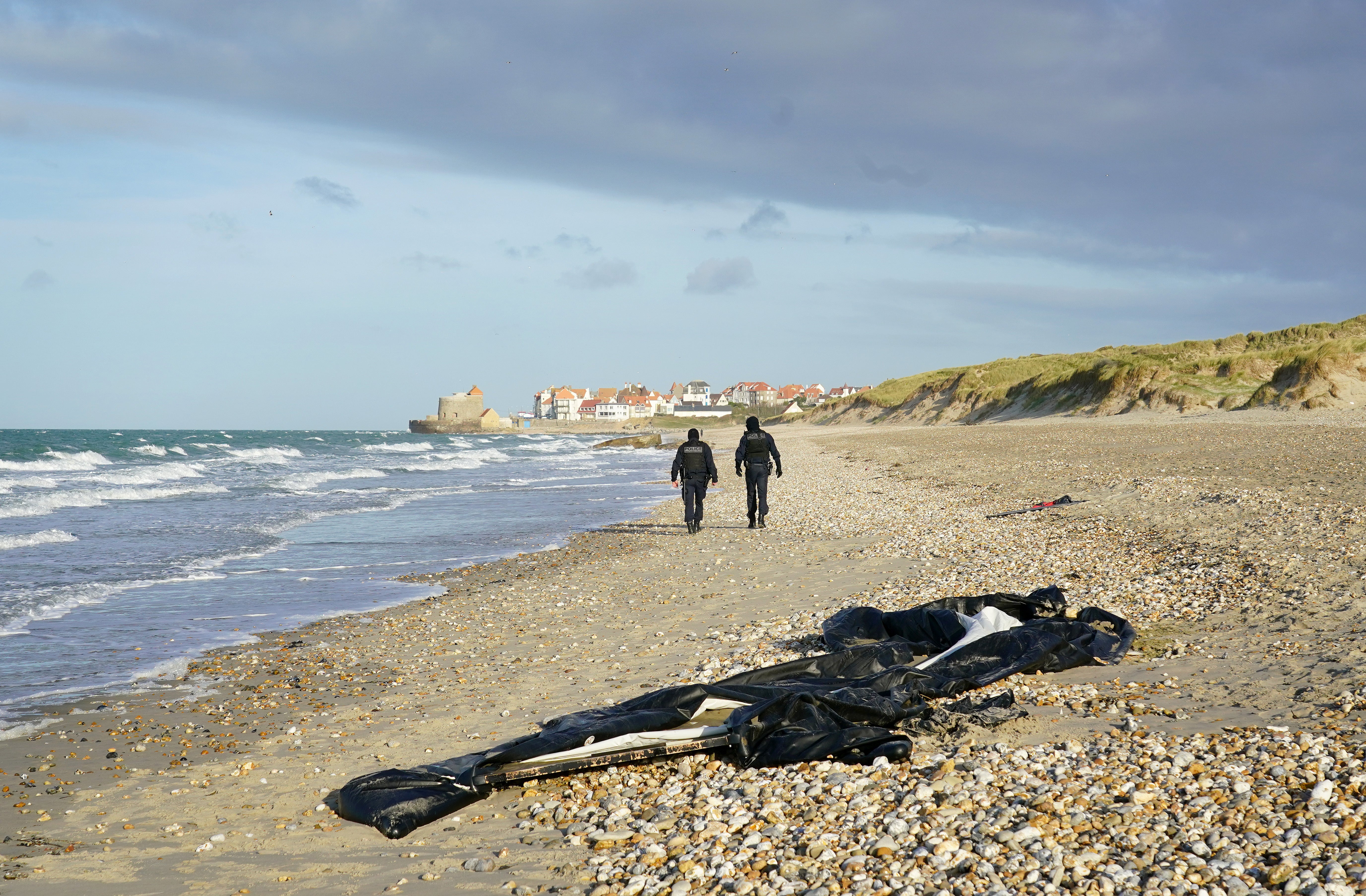What are the ‘safe and legal routes’ the government says refugees must take to Britain?
The government says it will only accept refugees arriving on ‘safe and legal routes’. Lizzie Dearden looks at what those are

Rishi Sunak and Suella Braverman are under renewed pressure over the the lack of safe and legal routes into the UK after six migrants died when their small boat capsized in the Channel.
Campaigners and MPs have warned that more people will die trying to reach British shores until there are significant changes to the government’s asylum policy.
The Home Office has repeatedly said that refugees should use “safe and legal routes” to reach Britain, but critics have been swift to point out that such routes are currently very limited and weighted heavily in favour of countries including Ukraine.
The Independent has repeatedly raised the plight of several Afghans who have travelled to the UK on a small boat because they were in fear of their lives and could not wait for help via official routes.
How can people seek asylum in the UK?
Under British law, you must be physically present in the UK in order to claim asylum.
There is no visa for people to travel to the country for that purpose, meaning that they must arrive by different means.
Most asylum seekers arrive in the UK through legal travel, such as commercial flights, on visas for other purposes such as tourism or study.
But those who are unable to obtain visas because of their practical or financial situation, such as fleeing a war zone or hostile government, are pushed onto irregular and illegal routes often controlled by smuggling gangs.
Because of the Schengen passport-free area inside the EU, many asylum seekers heading for the UK make irregular sea journeys to Greece or Italy and then travel over land until their journey ends on France’s northern coast.
What safe and legal alternatives are open?
Ministers have hailed the arrival of hundreds of thousands of people from Ukraine and Hong Kong, but the schemes involved in those two instances have bypassed asylum processes with the creation of bespoke visas that do not grant refugee status.
The “safe and legal” routes the government claims those crossing the Channel ignore are programmes where the UK resettles people from abroad who are recognised by the UN Refugee Agency (UNHCR). It also allows people to join relatives who have already been granted asylum in the UK.
They effectively allow the government to pick and choose who comes to the UK, how and when.
For that reason, the process is slow and extremely restricted. The UNHCR has said: “Critical resettlement schemes remain very limited, and can never substitute for access to asylum. The Refugee Convention explicitly recognises that refugees may be compelled to enter a country of asylum irregularly.”
How many people arrive on safe and legal routes?
Home Office figures show that in 2022, 14 times more refugees were granted asylum after travelling to the UK themselves than were resettled by the British government.
More than 16,600 people were granted asylum after travelling to the UK – including many who arrived on small boats – while only 887 refugees were brought to the UK under the government’s flagship UK resettlement scheme.
A further 216 people were resettled under the separate community sponsorship scheme, and 22 Afghans who missed the August 2021 evacuation were brought to Britain.
While 4,473 partners and children of refugees living in the UK were allowed in on family reunion visas, the figure is 40 per cent down on 2019 and the route is not open to other relatives.
Will the government create more safe and legal routes?
In July, the government passed a raft of punitive asylum laws aiming to see small boat migrants detained and deported without having their claims considered.
But the Illegal Migration Act cannot be implemented because there are no operational deportation agreements in place, with the £140m Rwanda scheme ruled unlawful by the Court of Appeal.
Even if the government wins the final stage of the legal battle at the Supreme Court, the Lord Chief Justice said “the physical capacity for housing asylum seekers in Rwanda was limited to 100”.
A parliamentary report also warned that the new Illegal Migration Act could lead to asylum seekers taking “more dangerous routes” to the UK, benefit people smugglers and worsen trafficking.
The only commitment made as part of the Illegal Migration Act is “an annual cap, to be determined by parliament, on the number of refugees the UK will resettle via safe and legal routes”.
And the home secretary said such a move would not be taken until “we have stopped the boats”.
Opposition MPs and refugee groups have voiced disbelief at the claim, following years of warnings that a lack of safe and legal routes is a major driver of small boat crossings, and that increasing them would reduce demand for smugglers.
Home affairs committee chair Dame Diana Johnson told parliament that an inquiry by MPs published last year said the government must “expand safe and legal routes”.
What else is being proposed?
A range of alternative schemes has been proposed, including “humanitarian visas” like those offered to those fleeing Ukrainian, that do not require people to go through the asylum process.
Some MPs have called for the UK to create a preliminary form of asylum processing in France, so that those with legitimate claims can travel safely and legally across the Channel, and those who do not have to stay.
Others have demanded that the government simply puts more effort and resources into the resettlement schemes it already has running.
Subscribe to Independent Premium to bookmark this article
Want to bookmark your favourite articles and stories to read or reference later? Start your Independent Premium subscription today.






Join our commenting forum
Join thought-provoking conversations, follow other Independent readers and see their replies
Comments